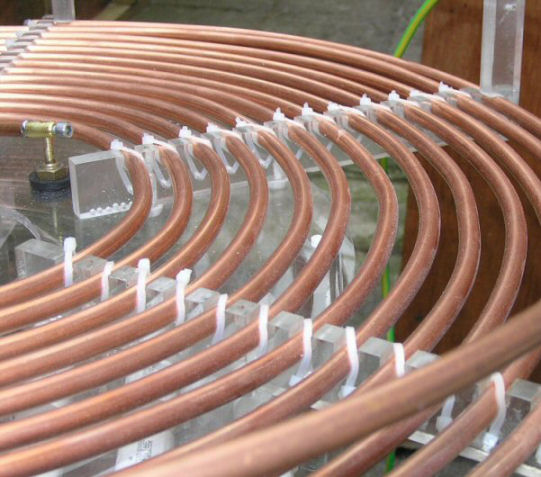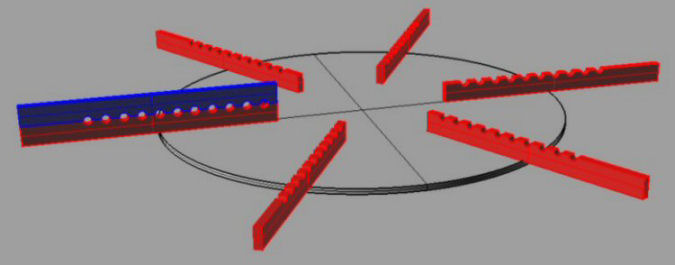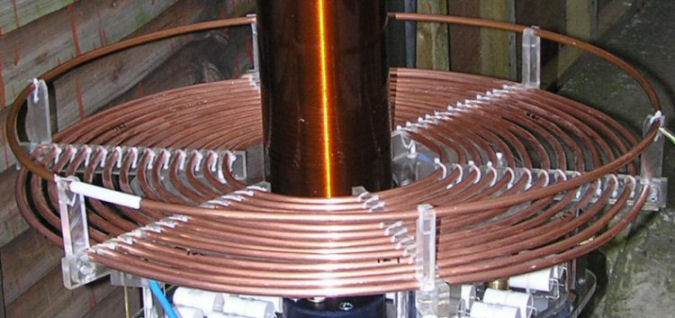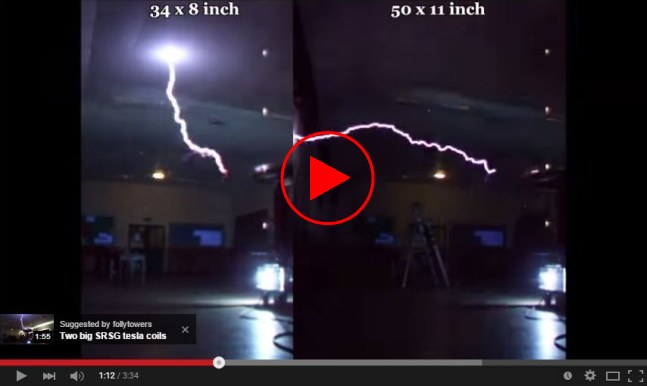
The primary of my Tesla coil consists of 8mm copper heating pipe. This is fairly easy to bend and comes in a roll, so careful handling should ensure that you do not get any kinks.
The base for the primary deck is a sheet of Acrylic 5mm thick and about 20 inches in diameter. This has a central hole cut into it that is just slightly larger than the secondary coil's diameter. The allows the secondary to drop through the hole and screw onto its mounting post.
To assemble the primary for use, you simply drop it onto the four upright posts that stick up from the MMC below. Each of these posts has little studs in their tops that locate into four corresponding holes in the primary's Acrylic sheet base.
I then just have two very quick and easy connections to make for each end of the primary coil.

The strike ring concept works because of the fact that if a streamer is in that area, it would find it easier to jump to the ring, which is linked direct to the RF earth, rather than going to earth via the primary. It is most important to have a 2 inch or so break in the ring. Otherwise it will look like a closed loop to the coil and it will absorb power because of eddy currents.
A better solution is to have a sheet of Acrylic covering the primary to protect it from strikes. Sometimes when the streamer hits the Acrylic shield it disperses like water over the surface - a quite unusual sight.
Strike rings do have a downside though - they attract streamers that might have otherwise safely dispersed to the surrounding air. If you have a small coil with an NST that you wish to protect, then try one and see. If it causes more problems that it solves, then run without.
I use an acrylic sheet placed over the primary with an earthed lead glued around the outside edge about an inch inwards underneath the sheet. This has protected my primary so far without unduly attracting streamers.
If the coil has sufficient power, then a large diameter toroid to offer electro-magnetic 'shielding' to the primary is the most effective method, as can be seen on my video test of differing sizes of toroid on the same coil.
This method though is obviously only suited to larger coils.
This interesting video is a comparison between a 34" x 8" toroid and a 50" x 11", (kindly loaned by P Strauss). It not only stopped primary strikes but also gave brighter and more intense streamers.
Apart from retuning, only the toroid was changed, with power levels kept to exactly the same level. The coil's position was not altered either.
(Video runs in split screen for easy comparison.)

The tubing is held in place by small cable ties that can just be seen in the picture below. I drilled a small hole underneath each cutaway through which the cable tie goes.

The white plastic screw heads you can see, secure the combs to the Acrylic base.
The inner end of the coil is secured firmly, and then brought through to the underside of the base for its connection.

